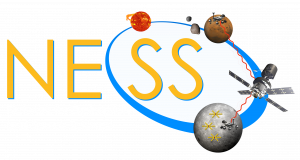Research areas of special interest include the following:
(Please note that these are technical descriptions; please see the Cosmic Dark to Cosmic Dawn Website for more accessible descriptions!)
The First Stars
The first luminous objects in the Universe were exotic "Population III" stars, which likely formed about 50 million years after the Big Bang. The properties of these sources are almost entirely unknown, as they have yet to be observed, but they were likely much more massive than typical stars today. While these stars formed in tiny clumps, their collective effects, including both their radiation backgrounds and the heavy elements they produced, have enormous implications for subsequent generations of structure. The research group focuses on how we can use forthcoming observations - including intensity mapping - to understand their properties.
This figure shows the predicted history of star formation in one of the group's "semi-analytic" models of the first stars and galaxies. The vertical axis shows the star formation rate density (i.e., how rapidly stars form in the Universe, per unit time and volume). The blue and red lines show the contribution from "normal" and Population III star formation, while the black shows the total. The transition between these modes depends on feedback from the first stars and is a key observable of this era.
Figure: From Mebane et al. (2018)
Galaxies at Early Times
The first stars were likely transient sources - forming in gas clouds too fragile to sustain star formation over long time periods. But as their host dark matter halos grew, they could eventually hold onto enough gas to sustain star formation over long timescales -- or in other words become galaxies! These galaxies are in many ways similar to those at later times, but they grow far more rapidly (thanks to the short timescales over which the Universe evolves at early times). The research group is interested in understanding the key properties of these galaxies. What regulates their star formation rate? How do their gas supplies grow? How do they spread heavy elements through the Universe?
The group also uses these galaxy models as a foundation to interpret observations and help optimize future measurements. For example, the figure at right shows predictions for the field-to-field variations in future galaxy surveys due to cosmic variance - the large-scale density fluctuations across the Universe. (The different colored bands show predicted variations for surveys of different sizes, with the narrow orange bands corresponding to the largest.) Incorporating the galaxy model and its predicted variance into galaxy survey improves measurements of the luminosity functions and the environments of the galaxies.
Figure: From Trapp & Furlanetto (2020)
Reionization
The landmark event of the Cosmic Dawn is reionization, when photons produced by early galaxies escaped into the intergalactic medium (IGM) and ionized all of the hydrogen in the Universe. In the standard picture, ionized bubbles first appeared around the earliest sources, later growing and merging as more and larger galaxies appear. The image here shows a computer model of reionization, with the gray corresponding to neutral gas and the white ionized gas. The ionized bubbles grow rapidly throughout the process.
The Furlanetto group models the reionization era in order to understand how astronomers can use it to learn about galaxies and the early IGM, using a range of models that include analytic, semi-analytic, and "semi-numeric" models. For example, the sizes of the bubbles depend primarily on the overall ionized fraction, but their characteristic scale can also be used to measure the masses of the galaxies driving reionization. The IGM also affects the bubbles by limiting their growth in the late stages, thanks to absorption of ionizing photons by residual neutral gas.
Figure: From Furlanetto & Oh (2016)
The 21-cm Signal
One important way astronomers hope to observe the Cosmic Dawn is with the 21-cm hyperfine "spin-flip" line of neutral hydrogen. This is an extraordinarily weak transition, but the Universe has so much hydrogen that it is (in principle!) observable in the early Universe. The Furlanetto group works to understand how observations of this signal can be used to measure the properties of the first stars, black holes, and galaxies.
The accompanying figure shows an example of this process. While the 21-cm signal has not yet been definitively detected, the EDGES collaboration announced a possible measurement in 2018, shown by the light gray in the figure. The signal was surprising relative to expectations: for example, the dashed curve in the figure shows a prediction based on "normal" galaxies. The other curves show a range of predictions incorporating the formation of the first stars (as described above). Including these sources helps match the tentative signal's timing (matching its position along the horizontal axis) and can match the amplitude, but only if the black hole remnants of these stars are exceptionally strong radio emitters. As measurements of the 21-cm signal improve, these kinds of inferences will also become more robust.
Figure: Mebane, Mirocha, & Furlanetto (2018)
The Intergalactic Medium
While not typically luminous in its own right, the IGM - the material between galaxies - actually contains most of the matter in the Universe. It also acts as the fuel supply for later generations of galaxies, so it is important to understand its properties. The Furlanetto research group uses analytic and simple numerical models to understand how the intergalactic medium evolves and how we can use it to learn about galaxies.
The figure shows how the properties of the IGM vary in two different models. The left panel shows the ionizing background (denoted by the Greek Γ ), in a model in which the Universe is reionized but has strong fluctuations in the ionizing background. The right panel shows the temperature variations caused by the reionization process. These two models predict very different galaxy populations in regions with substantial quantities of neutral hydrogen, and the Furlanetto group is using galaxy surveys to determine which picture better represents the early Universe.
Figure: From Davies, Becker, & Furlanetto (2018)


